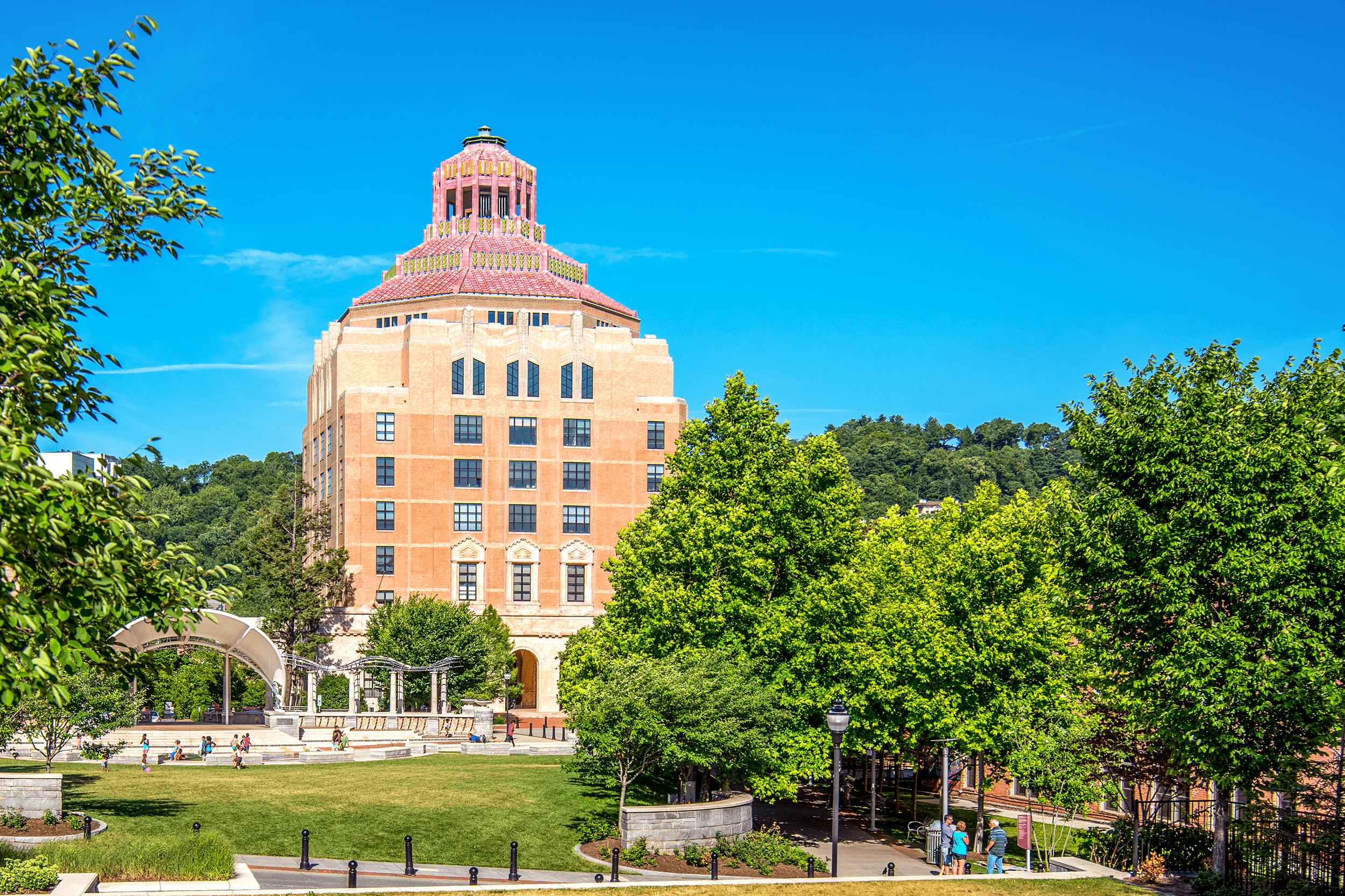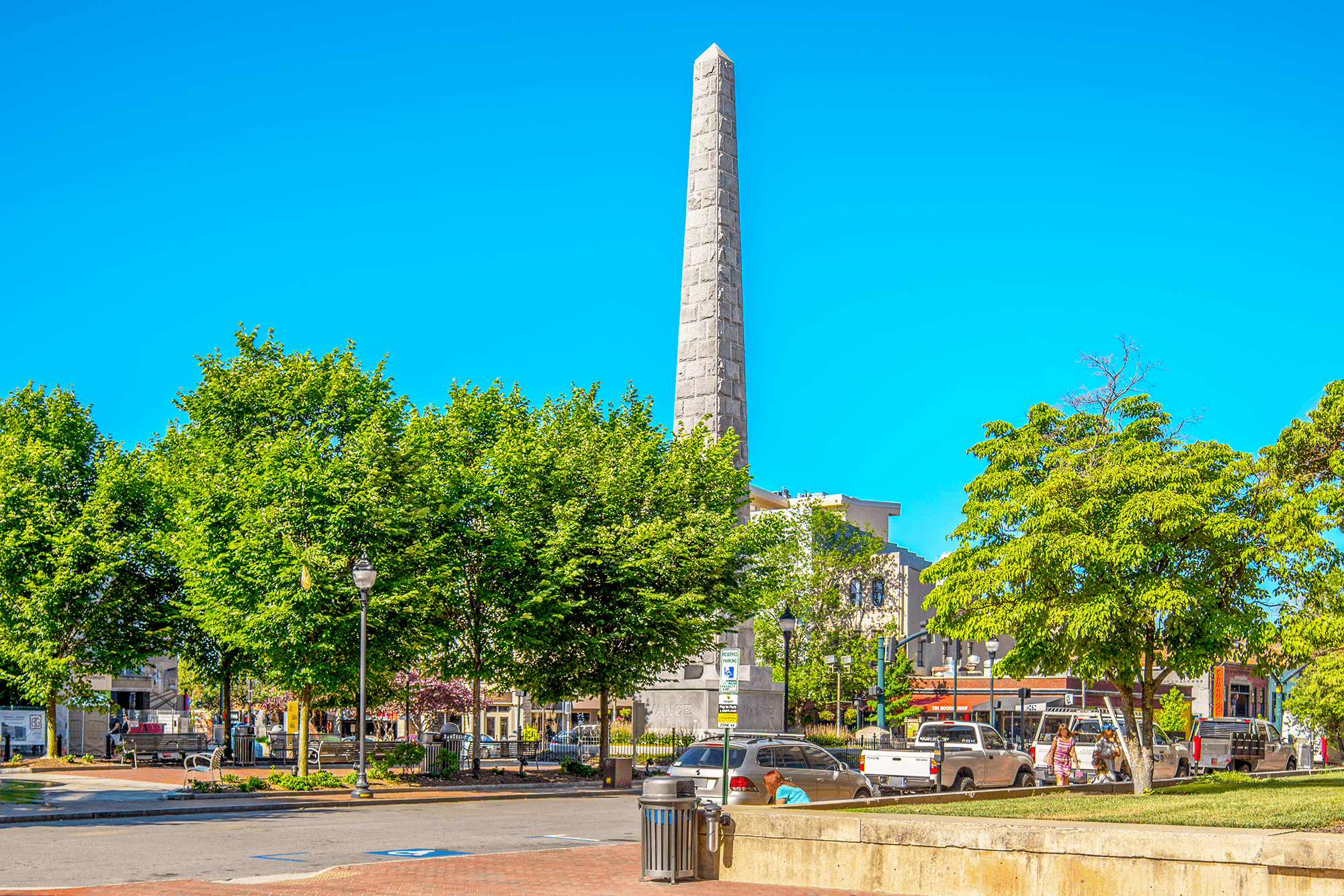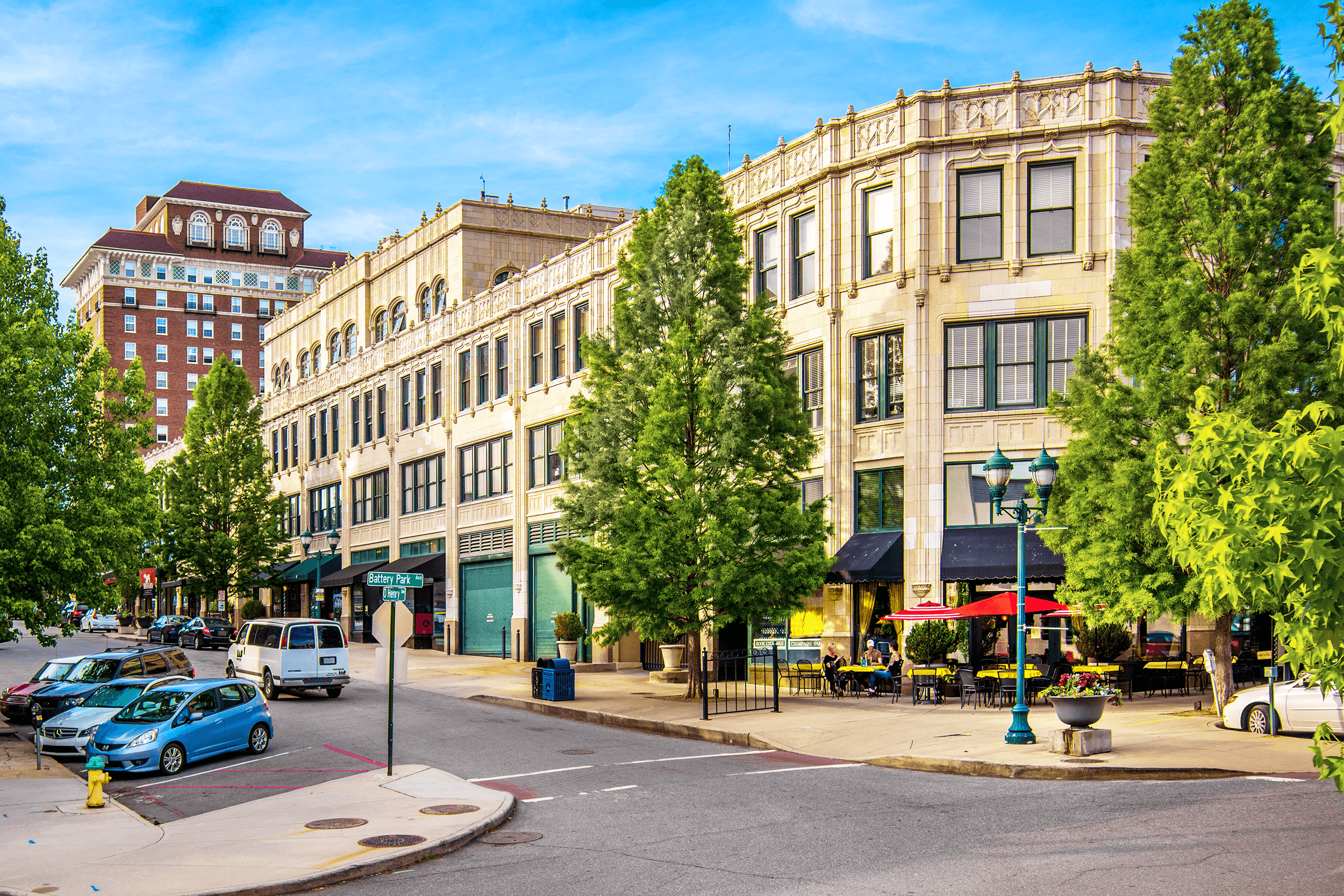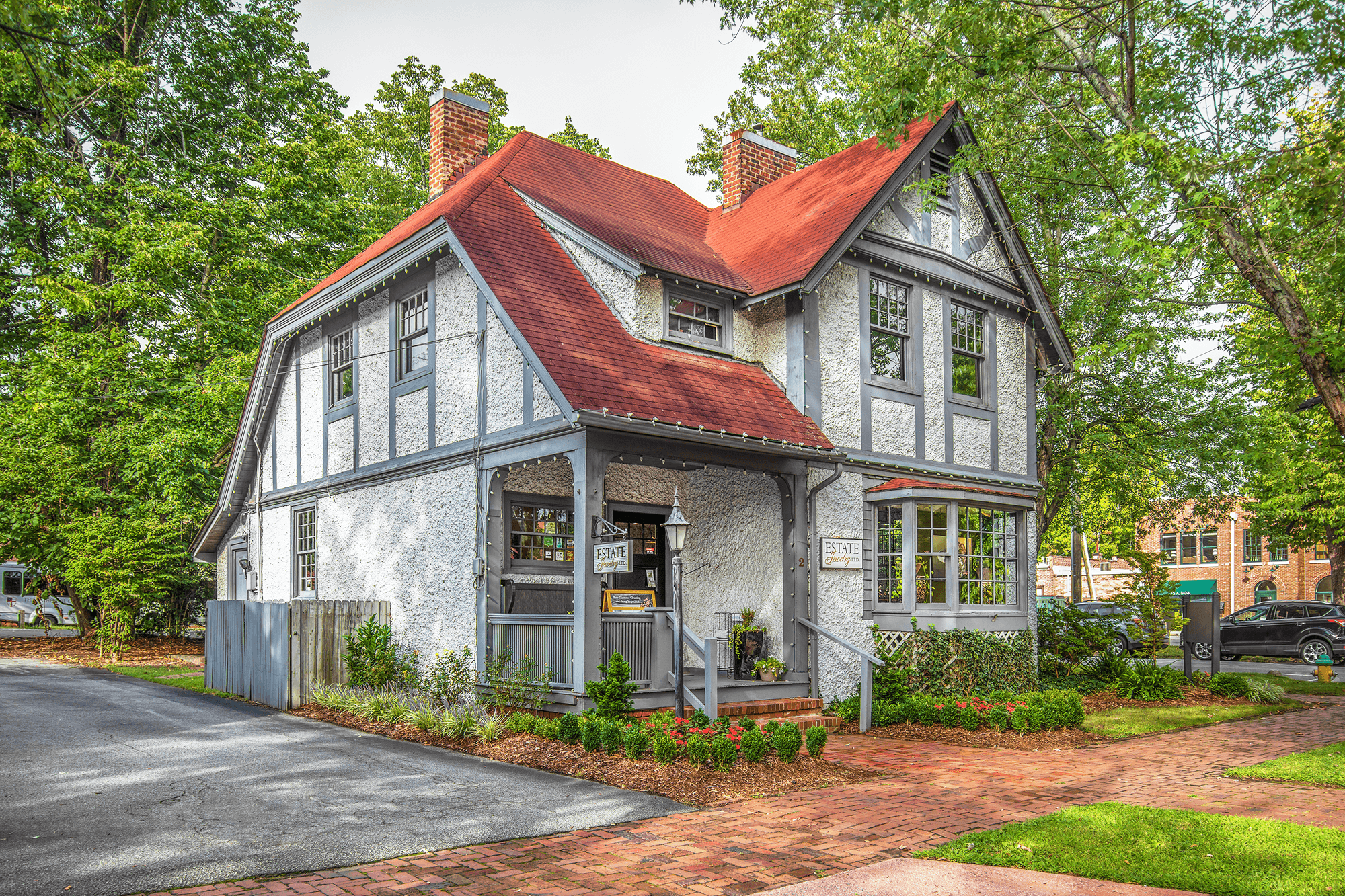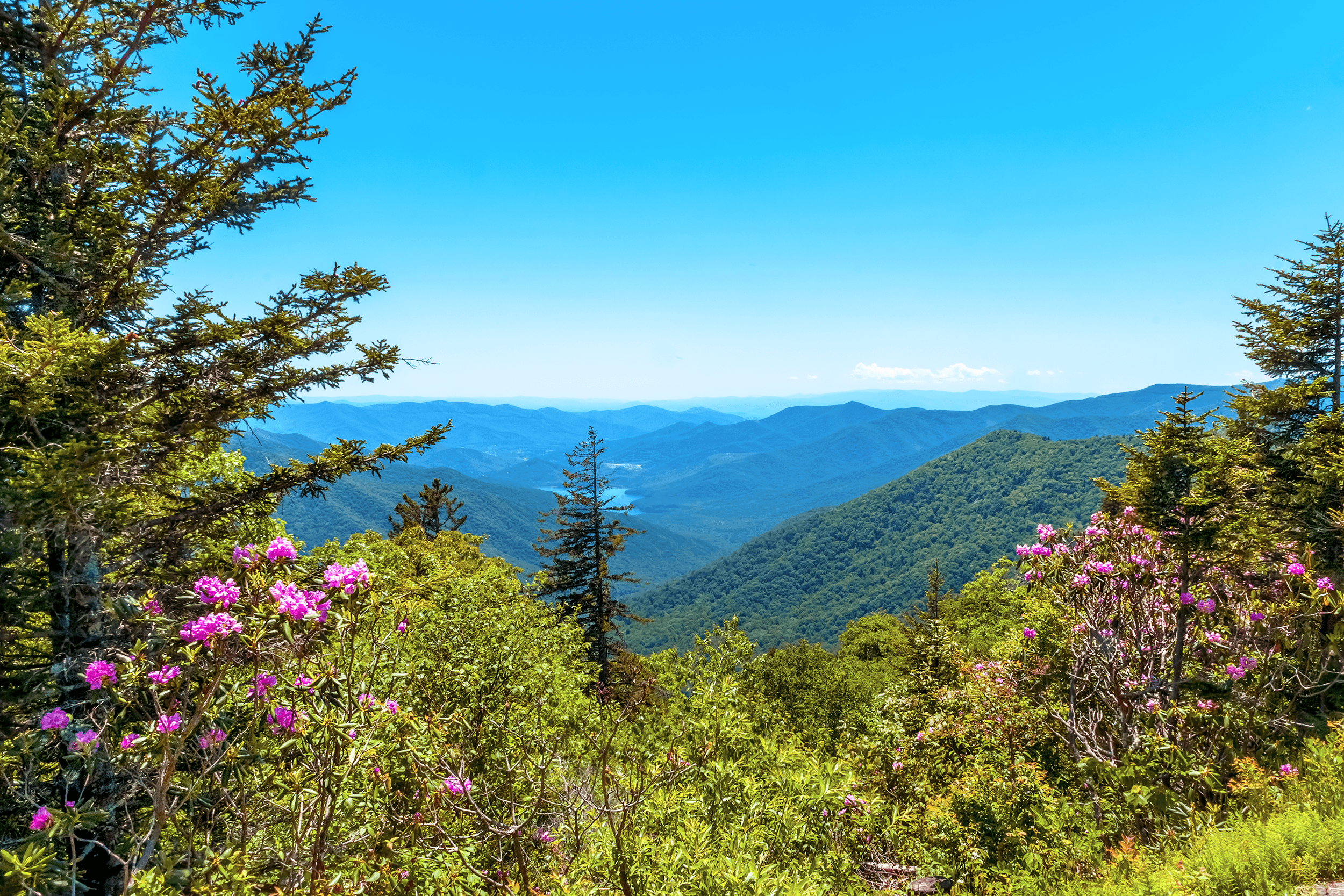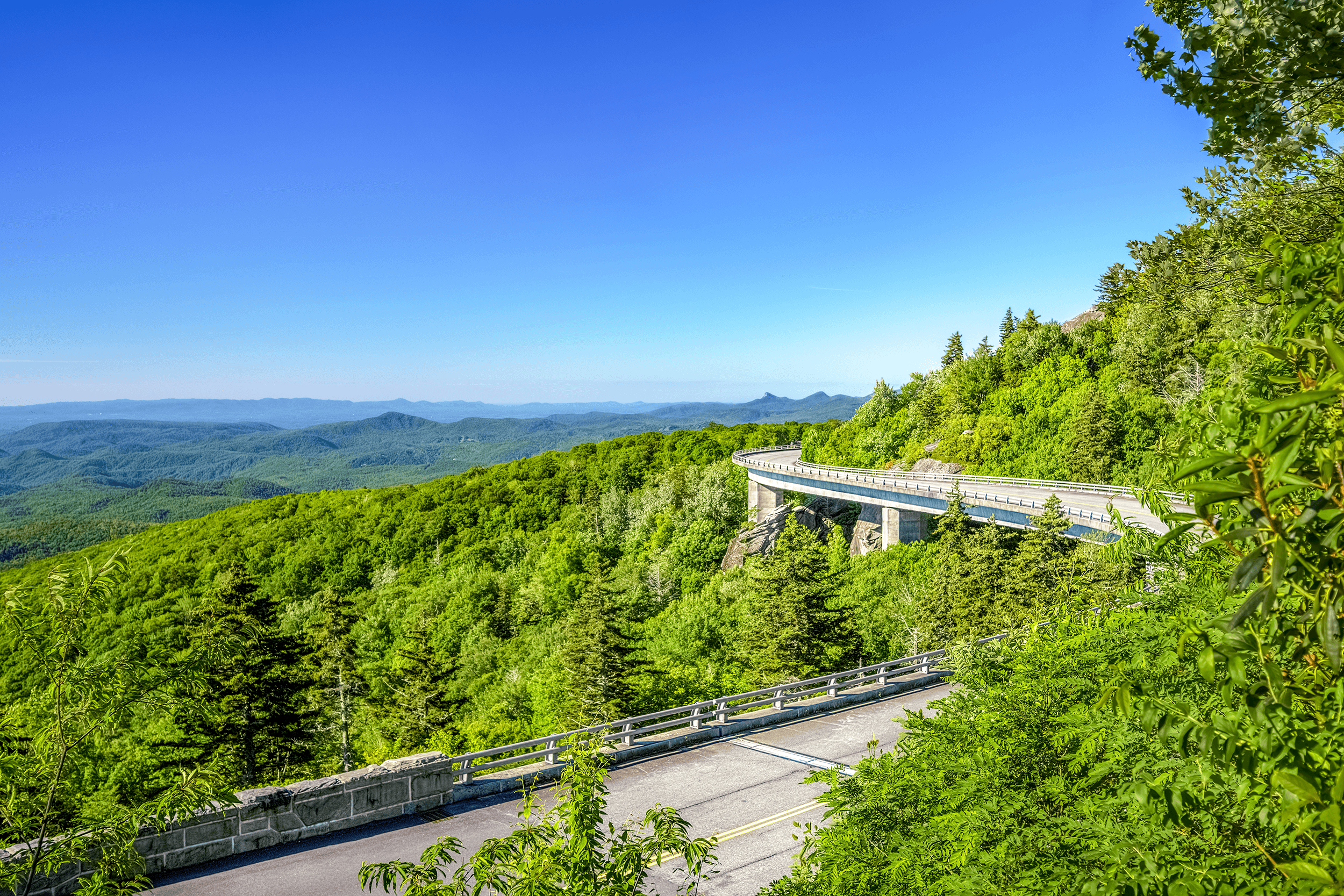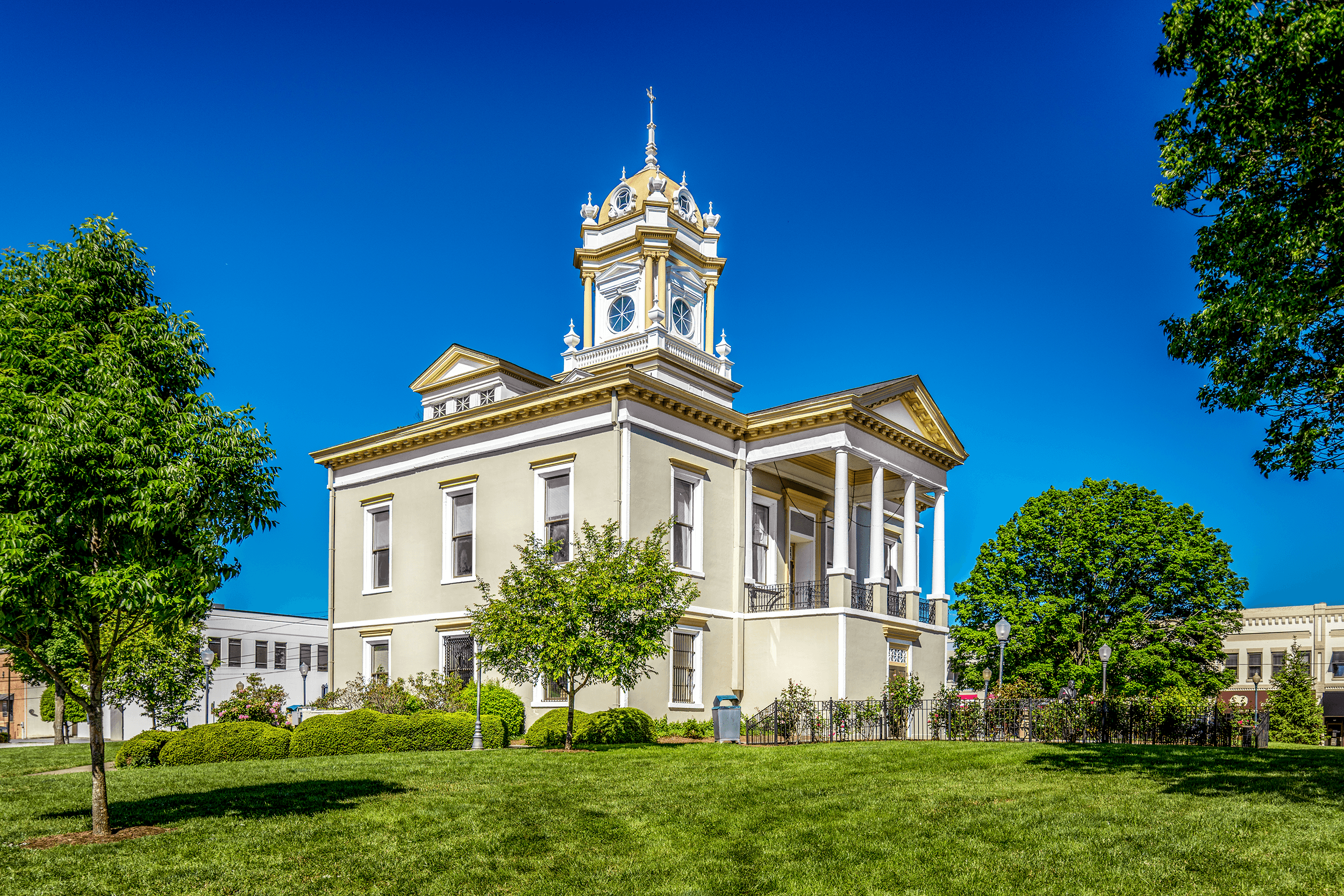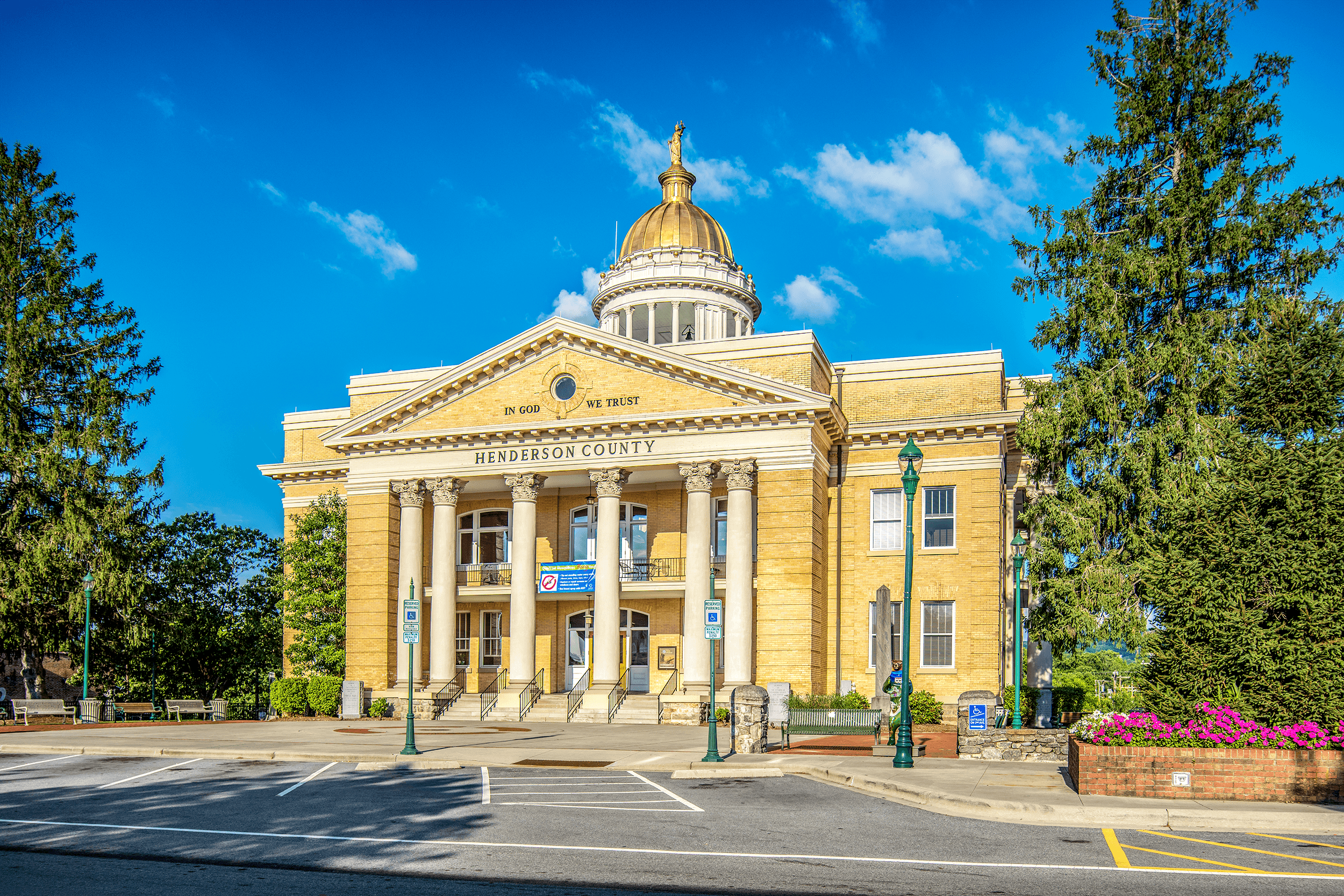Rumbough House

Updated: April 2019
Residing Majestically on a Hilltop
The elegant Rumbough House is considered one of the most beautiful residences in the historic Montford District. This magnificent manor house lies majestically on a hilltop and features a combination of Queen Anne, Colonial Revival, and Neoclassical elements.
This asymmetrical two-and-a-half story house has a full-width wrap around porch supported by pairs of tapered and molded porch posts on stone pedestals. The front façade has a five-sided central bay with paired windows and a wrap-around cornice frieze, which is decorated with floral motifs.
The Rumbough House is beautifully situated on a hilltop.
The residence was completed in 1892 for John G. Baker (1833-1901) and designed by architect S. S. Gotley of Cincinnati. John Baker was a wealthy Philadelphia inventor and vice president of The Enterprise Manufacturing Co. In 1866 when the company was formed, he contributed over 40 inventions, such as the Baker Pressure Blower, which was widely used in mining operations and foundries. He retired in 1888 and spent the winters in Asheville and supervised the construction of the home and the selection of the building materials.
In 1890, his daughter Martha Elizabeth Baker (1867-1941) married James Edwin Rumbough (1861-1941), who was one of eight children of James Henry Rumbough (1832-1924) and Caroline “Carrie” Turpin Powell Rumbough (1837-1913).
James Edwin and Martha lived in this beautiful home since its completion in 1892, which Martha’s father John had deeded to her as a wedding gift.
In 1952, Duke University purchased the property and used it as an administration building for the Highland Hospital. At that time, the castle-like looking Homewood, situated just down the street, was also owned by Duke University and was used as a nurse’s home.
In 1981, Duke University sold the Rumbough House together with the other adjacent properties.
For many years after that, several medical organizations used the Rumbough House as an administration building.
Father James Henry Rumbough (1832-1924)
James Henry Rumbough was the operator of a stagecoach company that ran between Greeneville TN and Greenville SC following the narrow winding Buncombe Turnpike.
Completed in 1828, the Buncombe Turnpike mirrored in most parts today’s U.S. 25 from the Tennessee border, through Hot Springs, Marshall and the U.S. 251 along the French Broad River to Asheville. South of Asheville the Buncombe Turnpike followed roughly along today’s U.S. 25 Business through Flat Rock, Hendersonville and then U.S. 176 to Saluda and Tyron to the South Carolina Border. Along the route were several stops with hotels for travelers to eat and rest.
It is said that James Edwin Rumbough’s father-in-law supervised every step of the construction of the home and the selection of the building materials.
When the American Civil War broke out in 1861, James Henry Rumbough, a sympathizer of the Confederates, bought the elegant Warm Springs Hotel, which was located in an area long known for their healing mineral springs and picturesque mountain views. It had been a favorite resort destination along the Buncombe Turnpike since the early 1800s. The hotel was palatial with 350 guest rooms, a huge dining room for 600 guests, and a ballroom, which was so big that it was the second largest in North Carolina. Feeling increasingly uncomfortable in Unionist Greeneville TN, he and his family moved to Warm Springs. Today, Warm Springs is known as Hot Springs.
After the war, traffic along the Buncombe Turnpike rose again and so did the number of guests at his hotel. In 1882, the railway reached Warm Springs, sharply increasing the influx of tourists.
Disaster struck in 1884 when the Warm Springs Hotel burned to the ground. Lacking the money to rebuild his hotel, James Henry was forced to sell the hotel and the property to the Southern Improvement Company, which was funded by a group of investors from New York.
The new owners spent an enormous amount of money rebuilding a new resort, The Mountain Park Hotel. It was an elegant Swiss-style luxury resort hotel with 200 rooms, all lighted by electricity and heated by steam. It had 16 marble pools and lavish massage facilities. The hotel also featured the first nine-hole golf course in North Carolina, called the Wana Luna Golf Club.
When an even hotter natural spring was discovered in 1886, the town chose to change its name from Warm Springs to Hot Springs, which it is still called today.
The investors of the Southern Improvement Company, however, overextended themselves and were forced to sell to pay their bills. Their ill fate allowed James Henry to repurchase the property back from them, becoming the new owner and manager of The Mountain Park Hotel.
In 1913, the same year his wife Carrie passed away, James Henry retired and sold the hotel and the property to his eldest living son James Edwin.
Son James Edwin Rumbough (1861-1941)
James Edwin Rumbough, although knowledgeable about running a hotel, had other interests. Since 1892, he and his wife Martha lived in Asheville in the majestic Rumbough House, which he called Hopewell Hall.
He had been the first and only mayor of the autonomous village of Montford from its incorporation in 1893 to its annexation by Asheville in 1904.
James Edwin was also an early automobile enthusiast. In 1905, he became the first person to drive a car from Asheville to New York City, which took him 14 days.
In 1911, he became the first person to drive a motorized vehicle across the Appalachian Mountains into Tennessee.
The house was completed in 1892 and deeded to Martha, James Edwin’s wife, by her father as a wedding gift.
When his father sold him The Mountain Park Hotel in 1913, and with the First World War breaking out just a year later, tourism was in decline.
In 1915, James Edwin tried to lease the property to a group of Seventh-day Adventists, who turned the hotel’s ballroom into a gymnasium and changed the name of the hotel to Hot Springs Hotel and Sanitarium. They soon broke the contract, returning the hotel to James Edwin only a few months later.
In 1916, the French Broad River flooded, devastating the Wana Luna Golf Club, the bathhouse and the swimming pool. With bridges, roads and railroads destroyed or severely damaged, James Edwin somehow managed to keep the hotel going.
In 1917, another opportunity arose. That year, the United States entered the First World War seizing all German and Austrian commercial ships with all their passengers, officers and crew members along the entire east coast. Among the 30 seized ships was the steamship Vaterland, at 909 feet (277 m) the largest ship in the world at that time. The Vaterland was renamed Leviathan and continued as a troopship and then as the flagship of the United States Lines. There were thousands of passengers, officers and crew members “stranded” along the sea coast and the U.S. Government was looking for a place to bring them all together. This place became Hot Springs after James Edwin had successfully negotiated a contract with the U.S. Government to lease them the grounds and the hotel for $1,500 per month.
Soon 2,500 German and Austrian internees arrived by train in Hot Springs, a tiny village of only 650. Although barbed wire was strung up around the complex, security was relatively relaxed, since the “prisoners” were noncombatants. The officers of the vessels were put into The Mountain Park Hotel, while the women found rooms in town. It is reported that they were excellent dressmakers and sewed for the townspeople. The brass band of the Vaterland practiced every day and gave concerts for the townspeople every Sunday afternoon. The barracks were taken down soon after the First World War ended in November of 1918.
Many of the former “prisoners”, who had built close friendships with the townspeople, returned after the war to visit Hot Springs with their families.
While interned at Hot Springs, eighteen German sailors contracted typhoid fever, died and were buried at the Riverside Cemetery in Asheville’s historic Montford District.
In January of 1920, The Mountain Park Hotel was destroyed by an arsonist, never to be rebuilt again, bringing an era of a fancy resort lifestyle in Hot Springs to an end.
49 Zillicoa Street, Asheville, NC 28801
All day.
All year.
STREET VIEWING ONLY. Private property.
Street parking.
Public bus stop: Montford Ave at Zillicoa St.




